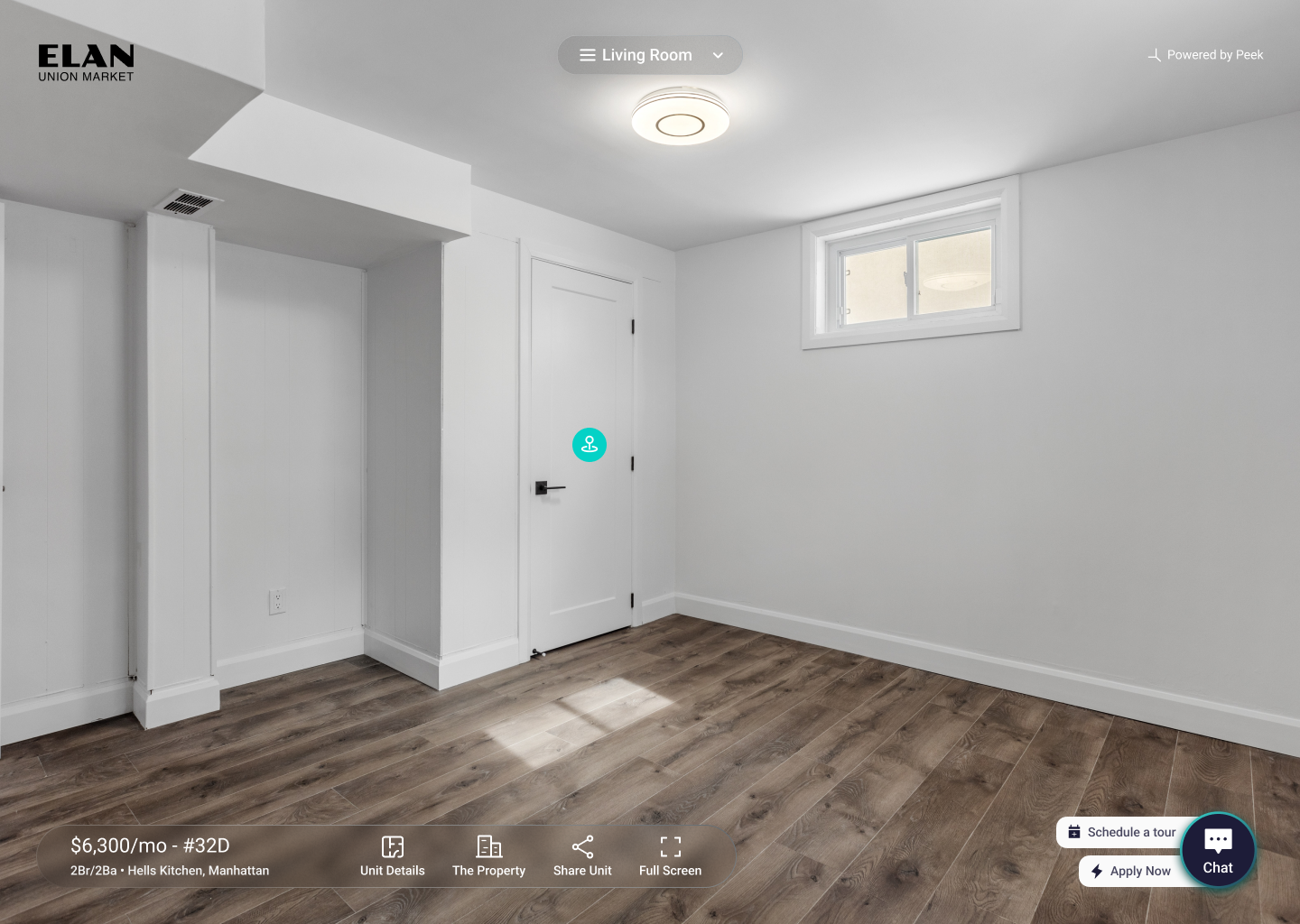Saving money on tools, or not

Welcome to The Unlock, a newsletter focused on cutting through the multifamily tech “noise” to show what actually matters in AI, leasing, and marketing. Each issue delivers market insights, technology trends, and deeper analysis on selected topics to see if there’s actually substance behind the hype.
Brought to you by Peek, the AI-powered leasing automation platform helping multifamily owners lease up to 30% faster.



I can be cheap. I like saving money and keeping budgets low. This mindset spills into everything, including my kitchen. I love to cook but try to avoid buying unnecessary things – particularly “single-use” kitchen gadgets.
Why spend money on a carrot peeler when a knife does the job? This logic held up until I decided to host a dinner party and make a dish involving four pounds of carrots.
Peeling two carrots with a knife is fine. Peeling 40 carrots, quickly, wasn’t. Somewhere along the way, the knife slipped, and I ended up with a gash on my finger that nearly sent me to the ER.
Ten dollars saved for a chunk of flesh. Not the best trade.
You can get away with saving money through little hacks—like peeling a carrot with a chef’s knife—for small tasks. You can almost always use a general-purpose tool to “do it yourself,” but at what cost? Sometimes that cost is time. Sometimes it’s quality. And sometimes, it’s a piece of your finger.

The same could be said for unit-level 3D tours. It’s no longer a secret that prospects want them. They increase leads, reduce vacant days, and drive higher property revenue. The debate isn’t about if they’re valuable, it's about how to actually scale them across a portfolio.
In the budget-focused world of multifamily marketing, an alluring idea is to have the onsite teams take care of creating the 3D tours. If they’re already walking the units, why not just grab a camera and make the 3D tours instead of paying photography fees?
This is peeling carrots with a knife.
While it may save on short-term costs, this approach ends up causing more headaches and costing money in the long term. How do I know? We actually tried this at Peek.
When Peek first launched 3D tours, capturing them was only self-service. Managing a large network of vetted, trained photographers—and the software needed to coordinate them—was a major operational challenge we wanted to avoid. Our first customers were mailed a camera kit, given access to unlimited online training, and we hoped for the best.
Unfortunately, this led to fewer than 10% of available units having 3D tours — a far cry from transforming how consumers rent. Let's do the math.



It takes about one hour to train a site team on capturing and distributing 3D tours. That’s manageable until you account for the 70% annual turnover in property management teams.
At that rate, most operators end up retraining each property’s team around 1.2–1.3 times per year (between new employees and refreshing existing teams).
Across a 200-property portfolio, even if you batch-train 10 teams at a time, that’s 20–25 training sessions per year.
And because group sessions are less effective, the real-time commitment is higher once you factor in follow-ups and individual coaching.

Make-readies don’t coordinate themselves. Someone has to chase maintenance schedules, confirm photographer access, and send reminders.
Even with good templates, it takes roughly 15 minutes per property to manage this each cycle per week. Multiply that by a 200-property portfolio, and you’re spending about 50 hours every week just coordinating media.
That’s an entire workweek spent on logistics, not reducing vacancy loss.

Every 3D tour has to be uploaded to multiple places—Apartments.com, Zillow, and your own website.
Even if it takes about one hour per property per week to upload, verify, and fix errors, that adds up fast:
- 52 hours per year per platform
- 3 platforms × 52 = roughly 150 hours annually
You’re looking at at least 150 hours spent just on the content distribution piece.

All those hidden tasks—training, updating, coordinating—add up to roughly 2,775 hours a year—more than a full-time job. Marketing teams are already maxed out, and the extra $70K–$100K salary you’d need just to keep the system afloat instantly nukes whatever “DIY savings” you thought you had.

Because bandwidth runs out, what we’ve seen happen with this model is:
- Only 15–20% of units ever get scanned
- Cameras get lost or stolen
- Staff turnover makes training a constant burden
The initiative starts strong, then fizzles. Implemented at one or two properties, never scaling portfolio-wide. What started as a cost-saving experiment ends as a half-built system that nobody has the time (or willpower) to maintain.
Few companies manage to pull this off internally because it demands expert-level “knife skills,” to extend the carrot metaphor.
They would need to create their own systems to monitor when vacant units come on the market; work with developers to create a custom notification system to send reminders to onsite teams when it’s time to photograph units; either create an automated content distribution system that uploads tours without human intervention, or pay a lot of people to work on it; and build a custom analytics suite to measure and analyze the data.
For most, that’s simply too much effort to cut a carrot. It’s faster, easier, and far more sustainable to buy the peeler.


This is the problem we built Peek to fix. We plug into your property management system so that when a unit flips to make-ready, a professional photographer is automatically scheduled to capture a 3D tour.
Once complete, the content is syndicated to all the major ILSs and your website. No manual uploads, no chasing people. From there, our analytics show what’s landing, what isn’t, and how prospects are engaging.
We don’t stop at content. Peek is a leasing automation platform designed to cut vacant days by up to 30%, saving large operators millions each year. Peek virtual tours become conversion tools with built-in "calls to action" that capture guest cards, conversational AI that answers questions in real time, and AI-assisted self-guided tours that let renters see the exact unit online in 3D and then visit it on their own schedule.
If you’d like to chat about unit-level touring, the hurdles facing multifamily operators today, or the best carrot peelers on the market, hit me up at austin@peek.us.

Our team is heading to Optech in Las Vegas from November 17th to 19th.
Come by our booth #604 and say hello!

If you’d like to set up time with our team, send us a note at sales@peek.us.

It’s no secret that sitting on leads loses renters. When a prospective renter doesn’t get the information they need for hours or days, they’re gone.
That’s why we built Peek’s AI Lead Assistant. It automatically ensures that prospects are sent 3D tours of available units using a tracked unit-level 3D virtual tour link.
Prospects can explore the unit and take action while their interest is still high.
Our data shows renters who take a unit-level tour lease up to 30% faster.
Read the full announcement here.

We’re excited to share that Peek 3D tours now sync automatically with EliseAI.

That means every unit, floor plan, and amenity you scan with Peek stays visible across EliseAI chat, CRM, and major listing sites like Apartments.com and Zillow — no manual updates required.
For EliseAI users, this means your prospects can now explore immersive 3D tours across all your marketing channels, updated in real time as units change status or come online.

Excited to announce our newest integration with ResMan Property Management Software.

ResMan users can now:
- Auto-schedule unit-level 3D tours the moment a unit is ready
- Sync unit data like availability, pricing, and floor plans directly into Peek
- Eliminate manual updates for onsite teams
- Enable self-guided tours from day one

Did you receive this as a forward? Or want to send it along to a friend?
Sign up for The Unlock here.


